The Art of Repetition
By: Thorsten Overgaard. June 19, 2024.
There is a certain beauty in repeating design, and there is a calm life lesson to learn from it.
Traveling through Japan for a couple of weeks to teach a workshop in Kyoto and doing portraits around Japan for a magazine, one thing hit me again and again: The art of repetition.
How so?
The Okura Tokyo hotel, about which someone left a review that it was "simple and not impressive", grew on me by the hour for their ability to repeat an unchanged pattern forever: The elevator doors of brass engraved with a repeating pattern that is also on the key card, the grand windows repeated throughout the length of the building, the lamps repeated again and again across large spaces, and chairs are lined up to perfection.
While it looks harmless and dull, it in fact enables high-speed production. Besides a subtle aesthetics, similar to the one of Danish architect Arne Jacobsen (1902-1971), it provides a framework for activity to happen without having to constantly navigate.
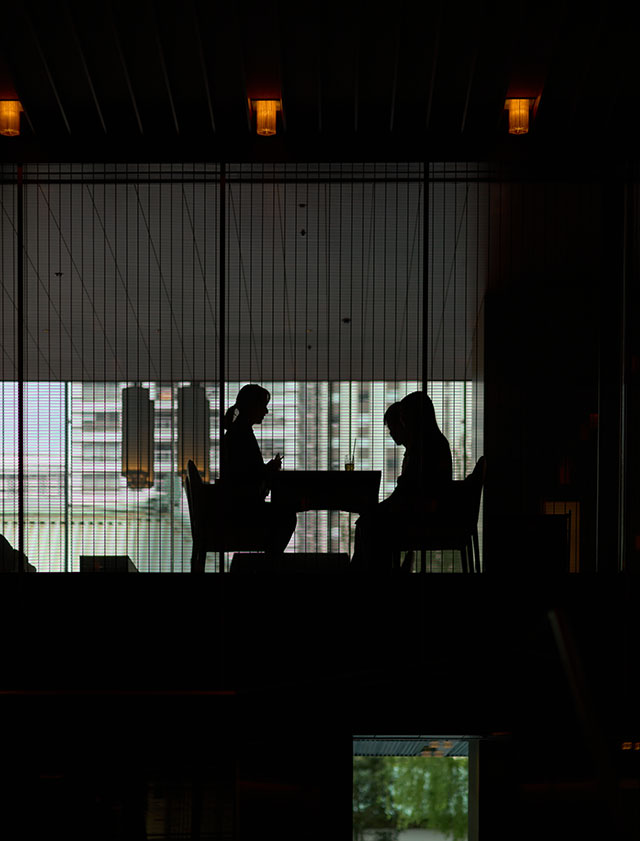
The Okura Tokyo hotel. Leica M11-P with Leica 75mm Summilux-M f/1.4.
How to work
I recently launched "The Photographer's Workflow Masterclass," which is my monster class on everything related to editing, sharing, and safeguarding photographs. The ideal is not to tell you how complicated and various the possibilities are, but to lead to understanding and simplicity.
There is one way to make something really simple, and that is to understand it. Then repeat it again and again. As such, workflow is the art of repetition.
Someone gets up in the morning and opens their coffee bar, and then they make one cup of coffee after the other until the day ends and they close the shop. Then the next day it repeats. As you repeat and repeat, you hire more help, and you may go from 200 cups a day to 800, and then you open one more similar store, and it repeats. That is how you make Starbucks.
Similarly, Elton John does a new album every year, the author Ken Follett writes a book every year, and when he strikes a particularly popular subject as his "Pillars of the Earth" (1987), he writes five of them (so far; I just reread all 5,000 pages in the series).
The art of repetition.
Not everybody can do it. They may feel something entirely new and different has to happen, and often because they lack the confidence that what they do will become successful if continued without change.
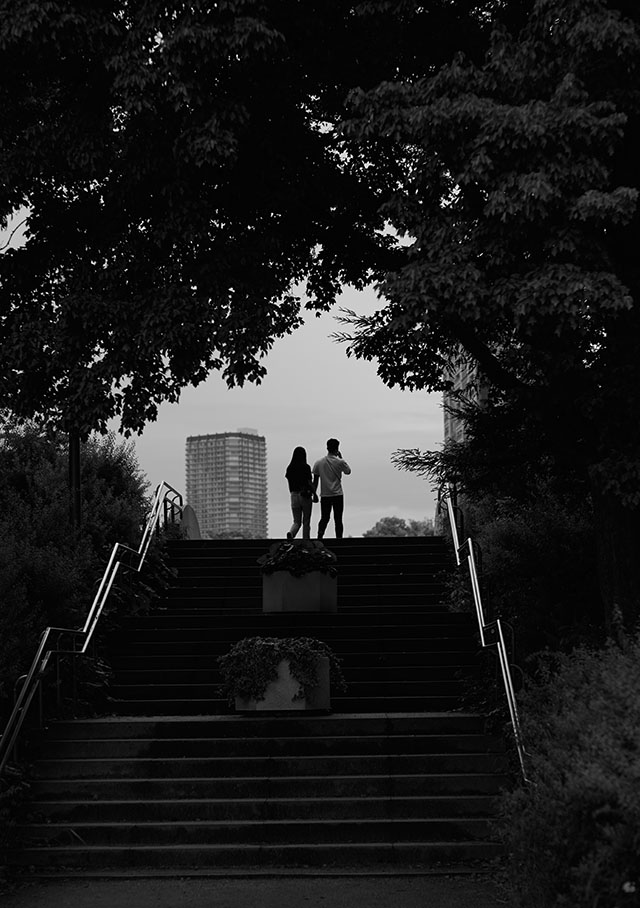
Osaka, Japan. Leica M11-P with Leica 50mm Summilux-M ASPH f/1.4.
How to stay inspired
A guy outside a hotel recognized me, and red in the face admitted he had left his Leica in his room. We talked, and the following days, whenever our tracks crossed, he did in fact wear his camera. As it is not uncommon, he had felt a lack of inspiration, and what you do when that happens is that you wait for inspiration to strike.
Long story short. The way to do it is repetition. You Always Wear A Camera, day after day, and whenever you see something that looks like a picture, you take it. In the evening, you download the photos and edit the good ones, and then you keep doing that again and again, day after day, year in and year out.
This is the art of repetition, it's like brushing your teeth. Nothing to it, you just do the same and the same again, and it works. You get clean teeth, and as for photography, you build an archive of final photos that can be used for something.
This cannot be done if you have to wait for inspiration, a signal from a divine higher power, figure out how to edit the photos, wonder where to store them, fight with Adobe Cloud, and all that.
You have to establish a routine that enables the art of repetition. Things have to be organized and simplified, and the way to do that is to understand how things work so you can omit the fluff and the unnecessary and just have the necessary - so as to allow the art of repetition to occur. This provides the freedom to layer creativity and newness on top.
Inspiration is a fluffy thing, but where does it come from? It comes from you!
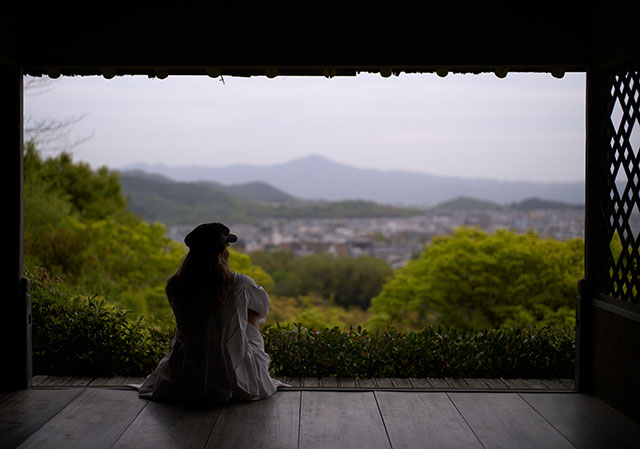
Layla in Kyoto. Leica M11-P with Leica 50mm Summilux-M ASPH f/1.4.
It can be beautiful, it usually is
The repetition in a choreographed ballet, a 30-year marriage, a car that always works, a camera that does what you expect it to.
Another hotel, the Gora Kadan in Hakone, is another example of Japanese simplicity and zen. With just 41 rooms ranging from $3,000 a night, it's a view for the few. A long walkway of repeated French doors and pillars for no particular reason other than the experience of space and light.
I met Mr. Shinichi, who had been working there for 23 years, which is another example of continuity. He was born in Tokyo but now lives with his wife and two children nearby Hakone and with little or no desire to return to Tokyo or anywhere else. "This place is good for me, I feel," he said as he referred to his home and his workplace. He takes photos with a pre-war Contax, replicating Bosnian movie scenes (Emir Kusturica), and then he runs a coffee bar in his house as well.
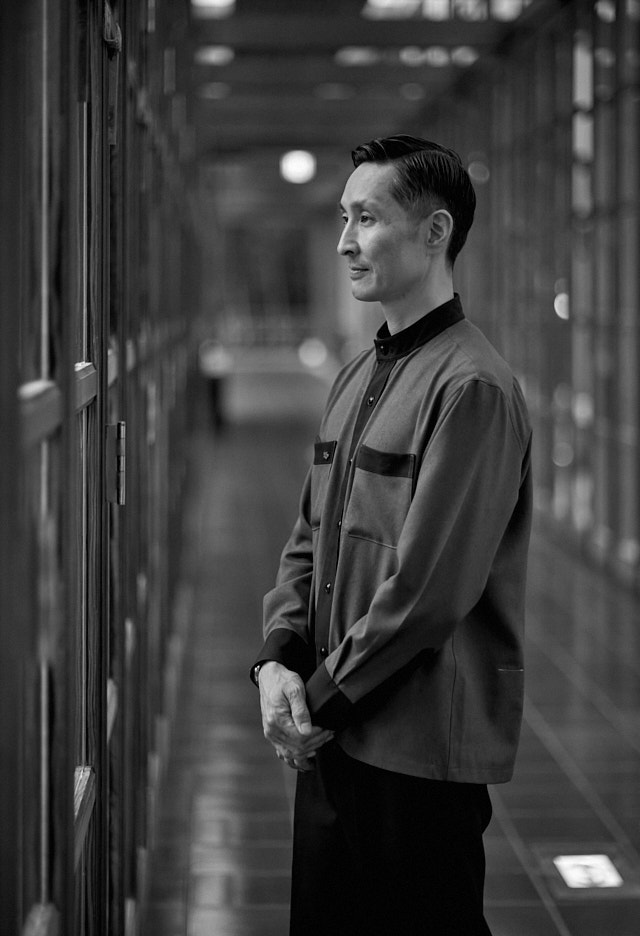
Mr. Shinichi Yamamoto has been working for 23 years at Gora Kadan Hotel in Hakone, Japan. A quiet resort where rooms range from $3,000 a night and everything seems to have a reason.
"When in doubt, do the usual"
Doing something well, and then keep doing it, and then do more of it, is a power in itself. We were exceptionally lucky to get a table at the original Nobu restaurant in Hakone where we were seated in front of the chef. Again, a space of straight lines, orderly organized flow of a back room where they prepare, then make it ready for the chef, who cooks one piece at a time. Like a conveyor belt from nature to kitchen to chef to our plate.
I noticed that, cutting a round daikon into four pieces, the chef would hold the daikon with his left hand, the knife in the right, and just before he made a cut, he paused for a second to measure that the knife would in fact cut where he planned it to, and then he would cut precisely as planned.
The chef does this every day, and many times. But the precision to make it the exact same is impressive.
In a way it is simple because if you feel you don't know if you are doing the right thing in life, or if people appreciate what you do ... "When in doubt, do the usual."
If you are having a bad day, it's likely not the best day to figure out a better way to do things. Inspiration, creativity, new inventions, and all that strike when you are doing the usual, when the car works, everything goes as planned - that is when you have time and energy to see new possibilities.
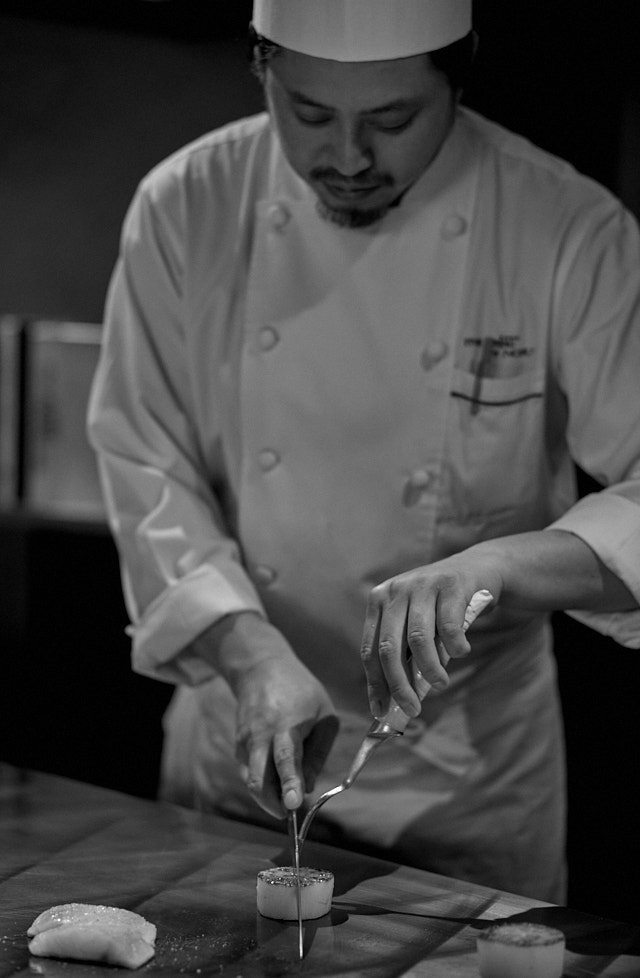
Nobu.
Continuation is power
I don't have a bright vision for every photo I take, and I don't have a bright vision for every chapter I write. I just keep doing it, and the reward is that when I look at what I did six months ago, or eight years ago, it seems really exciting. Much more than it did at the time where it mostly felt like another day in the office.
More to come
Bon voyage with it all. I hope this was helpful for you. Sign up for the newsletter to stay in the know. As always, feel free to email me with suggestions, questions, and ideas. And hope to see you in a workshop one day soon.
| |
|
|
|
|
| |
 |
|
| |
|
|
|
|
| |
"Photography is simple"
Thorsten Overgaard is one of the best to explain in simple terms how cameras works, and how to get excellent results.
Be competent. Buy and study this easy-to-use video class that explains how to get focus right, what sharpness is, how to get the exposure and the colors right, and more ...
"Easy to apply, photography finally told so everyone can become an expert user"
Normal price $498.00
Explained by Thorsten Overgaard by using Leica Q2, Leica SL2, Leica M11, Leica M10 Monochrom, 35mm film cameras, Leica Digilux 2 and more. |
|
Thorsten Overgaard's
"Camera Excellence Class"
For Computer,
iPad, Apple TV and smartphone.
Normal price $498.00
Only $198.00

Save $300.00
USE CODE: "COXY66" ON CHECKOUT
Brand new. Order now. Instant Delivery.
100% satisfaction or money back.
More info
Item #1847-0323
Released April 2023
|
|
| |
|
|
|
|
![]()
